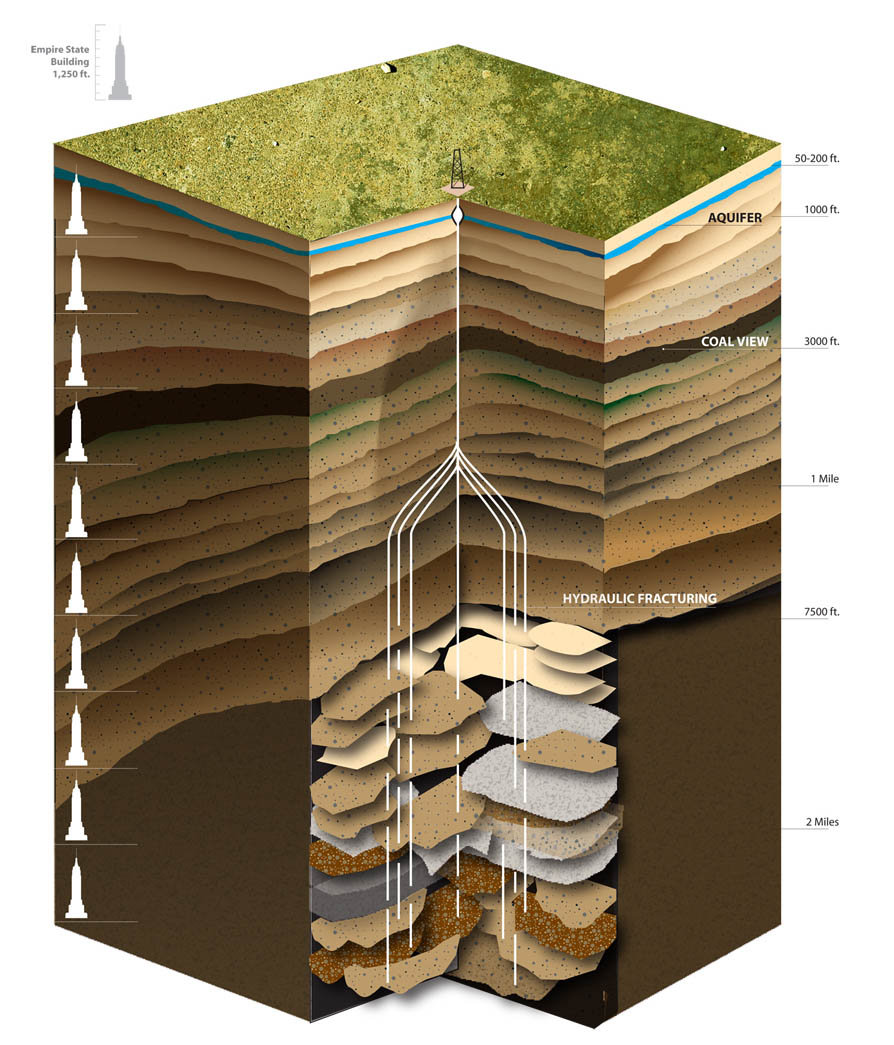An ancient writer once said “where fear is present, wisdom cannot be.” That could well be said of the current hysteria about hydraulic fracturing, a proven technology to produce clean-burning natural gas and oil.
Simply explained, a mix of water (99.5%), sand, and chemicals is pumped under high pressure to create minute cracks in rock formations thousands of feet below the surface so oil and gas can be extracted – energy that cannot be obtained without this technology.
Wherever there are vast new oil and gas resources, there are concerted efforts—largely by outside groups—to frighten local communities against the technology.
The “fracking” debate ought to be about our energy future. U.S. shale gas resources are the second largest in the world, according to the U.S. Energy Information Administration. The U.S. has over 100 years’ supply of natural gas at today’s consumption rate, and we have seen a significant increase in America’s recoverable oil reserves, largely as a result of fracking, without which much of our own energy simply cannot be produced.
Fracking has been used since the 1940s. Recent technical advances, along with the discovery of large deposits of natural gas and oil, like the Marcellus Shale in the Appalachians and the Bakken Formation in North Dakota, have made fracking more common. And that makes it the target of another negative campaign by alarmists who oppose all uses of energy.
Now a cadre of “environmental protection” organizations has been created for the purpose of turning public opinion against providers that use fracking to access previously unreachable oil and gas. As a result, there are new national debates about the practice, and the threat of EPA regulation.
Such drilling practices have always been regulated at the State level, so this would represent a major new expansion of federal power, part of the regulatory tirade of the current EPA leadership. Predictably, that possibility has led to angry congressional hearings, potential legislation, public hearings, and a rash of speeches and letters – mostly generated by these same environmental organizations.
These groups and their heavily-funded PR campaigns are creating fear in the minds of residents. Gin up enough fear among local residents and, the crusaders hope, politicians will respond by blocking or limiting energy development. The result could be a morass of burdensome regulations that are not justified by reasonable concerns.
Exaggerated claims about fracking focus on the chemicals, and are sometimes outright falsehoods and distortions. For example, residents are told that fracking will cause the contamination of groundwater and poison drinking water. But even the EPA and the Groundwater Protection Council (composed of state regulators) have issued reports admitting that there is not a single documented example of groundwater contamination caused b y fracking.
y fracking.
Where contamination of drinking water has been found, the source was not fracking, but corrosion of well pipes. Ironically, preventing such corrosion is the very purpose of the trace chemicals added to the water and sand – the chemicals opponents use to stir up public fear.
In the U.S., more than a million gas and oil wells have used the technique without negative impacts, and we all benefit from the energy they produce. Gov. John Hickenlooper, who is proposing requirements on drilling operations in the name of transparency, has said that “hydraulic fracturing doesn’t connect to groundwater, [and] it’s almost inconceivable that groundwater will be contaminated.” Senator Mark Udall agrees that done properly, fracking poses no threat.
It is virtually impossible to eliminate all risk from all human activities, and there are risks involved in energy production, too. That’s why there are industry standards and reasonable governmental regulations on such activities.
The promise of energy self-sufficiency and reasonable energy prices can be delivered if the U.S. can produce more of its own resources. And the development of America’s oil and gas means more high-paying American jobs, more income to citizens who lease land for energy production, and more revenue to local and state governments.
Fear can sometimes be useful if it’s based on facts. But when it is driven by false agendas, as in this case, it can blind our vision on important issues like energy independence. In that case, it has no useful place in the debate.




Comments on this entry are closed.